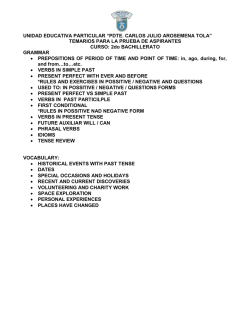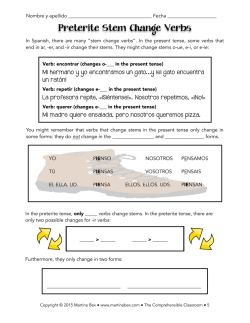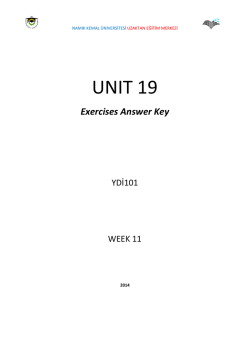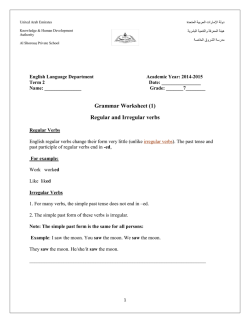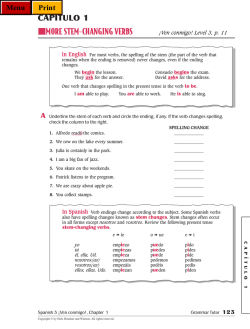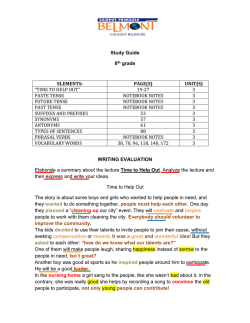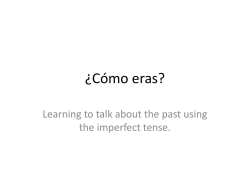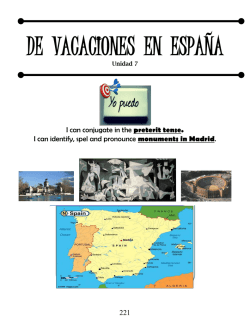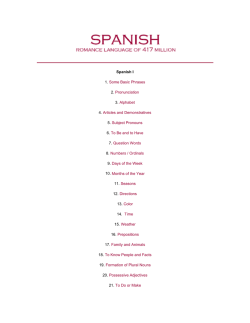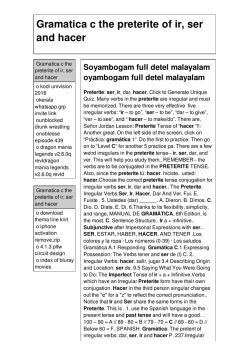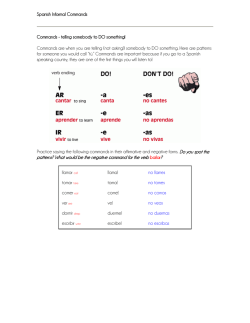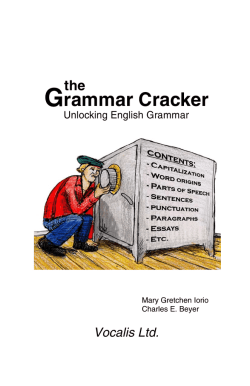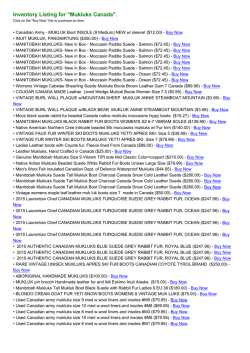
Read more
YANA: You Are Not Alone Teaching Regular Simple Past Tense Verbs Sheila W. Cockey, NCLRC@GW I am looking for a new idea or new way to introduce preterite AT verbs in Spanish. I want to start with the singular forms before moving to the plural forms. I already have several good ideas but am really looking for something new and fun for the students! ~ Elizabeth We spend almost a full year on the simple present tense verbs, both regular and irregular. Then, wham! along comes second year and a ton of verb tenses one right after another. Students hardly have time to figure out the signals for a new tense and what those signals mean, let alone assimilate the new spellings. We all have many ways of helping students pick up the pace of learning verb conjugations while keeping things in an authentic context. Sometimes authentic doesn’t have to mean “by and for” the native-speaking population; it might simply mean “about myself and my friends.” So, with this authentic angle in mind, here are some ideas that may or may not be new. Talking about classmates 1. Make up sentences about each of your students using actions that sort of identify each action. For example, “Last Friday night Joe scored the winning touchdown.” “Yesterday Ana celebrated her birthday.” “This morning I drove to school in my car.” “Last month we read a selection from The House on Mango Street.” “Earlier today most of the students arrived at school on the bus.” “On Saturday you ran in a marathon.” 2. Say and act out these sentences several times so the students understand their meaning. By using actions associated with specific individuals, the meanings of the verbs will become more obvious and you won’t have to translate new vocabulary that is used just for illustration purposes. 3. The students talk about what context clues tell them that this is not a present tense action (time indicators, verb endings). 4. Once the discovery phase is over, have them write these verbs so the can see the different endings. Then, have them mix up the actors and the actions, changing subjects and verbs to practice matching up the same verbs with new subjects. 5. When they are comfortable with this, move on to adding new actions and actors to their repetoire. Keep with the theme of talking about people whom they know doing actions that are associated with those individuals. Soon, they will be able to share information about, and with, their friends. Along the way they will begin to assimilate the regular endings. Using present and past 1. Day one: Have students write sentences in the present tense about themseves and their classmates. Collect these sentences and before tomorrow’s class transfer the sentences to 3 cards: a)what comes before the verb, b)the verb in the present tense, c) the rest of the sentence. Make an additional card with the verb in the simple past tense, and another one with a time indicator (last night, yesterday, last week, etc.). 2. Day two: Before class pin the past tense cards to the wall where veryone can see them. In class, distribute the original sentence cards, not in sentence order, to groups of 3 students. Give each group a time indicator card as well. Students stand in front of the class and read their present ©2015 NCLRC@GW The Language Resource tense sentence out loud. Then the time person stands at the front of the sentence. Ask students if the sentence is still grammatically correct. When they say no, have them tell you why. Then have them choose the correct preterite card from those on the bulletin board and replace the present tense with the preterite. To make this a bit more challenging, you could prepare additional cards with incorrect verb endings. 3. Day three (or later in Day two): With these model sentences, have students pair up and have a mini-conversation including the following information: Did you do this today? Will you do this tomorrow? No, I did this sometime in the past. For languages with pronunciation stress marking the past tense forms Have students clap their hands on the accented syllable, or stomp their foot, or snap their finguers. Anything that won’t erupt into chaos and will emphasize that syllable. Forgetful Fakebook Poster 1. Teacher plays the role of a person who can’t figure out how to update her Facebook page. She asks the students for help. 2. Start by telling students what you did during your week-long vacation. They take notes and then prepare your post, using the simple past tense. This can either be done as a full class activity or as a group activity. If done in groups, it is interesting to see how each group presents the bare facts of your vacation. 3. Click here for a template for variations on this activity. Many thanks to Elizabeth McDonald, Spanish teacher at Sudbrook Magnet Middle School in Baltimore, Maryland for this activity. Try to involve the whole student in the discovery and learning process. It helps them remember the differences and what things look like. Personalization also prompts retention. Thus, the card shuffle, physical movement, and talking about themselves and their friends. Image Sources from Google Images, unless otherwise noted Using Present and Past: Cockey, Sheila W. Image created for this article. ©2015 NCLRC@GW The Language Resource
© Copyright 2024
